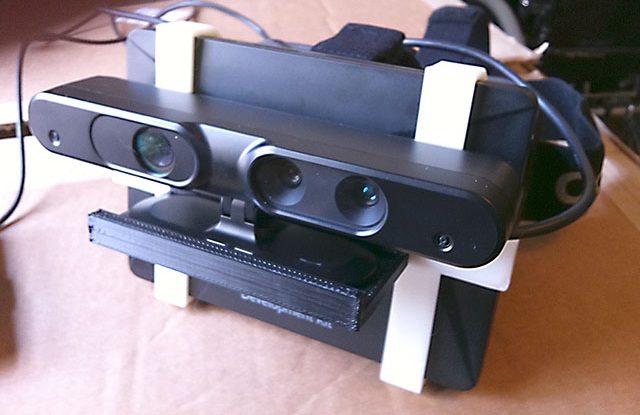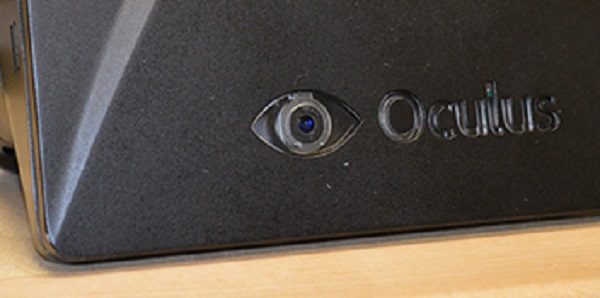It’s one of the more obvious mods for the Oculus Rift, but also potentially the most useful. Strapping a camera to the Rift let’s you see the outside world, which could be used for much more than just finding your way to WASD.
Before the Oculus Rift shipped, it had been thought (perhaps wishfully) that a forward-facing camera was placed inside Oculus VR Inc’s eye logo on the from of the Rift. It’s hard to fault anyone who might have thought this, some of the earliest manufacturing prototypes looked quite convincing:
While that didn’t pan out, interest in a front mounted camera hasn’t waned. Anton Belev over at the 3D Vision Blog has produced a very simple mod for adding a camera to the Oculus Rift.
He took a basic 640×480 30FPS webcam, replaced the standard lens with one that has a wider angle, and affixed the front of the Oculus Rift with velcro. The result? Easily see the outside world right through the head mounted display.
See his article to learn more about how he is playing back the video into the Rift.
Augmented Reality Possibilities with the Oculus Rift
While this certainly makes it easier to find WASD on the keyboard or to pick up and put down the Razer Hydra, a webcam on the front of the Rift opens up augmented reality possibilities. By intercepting and modifying the video coming into the Rift before it hits your eyes, you can do some interesting stuff.
One thing that has been proposed is using a camera for drift correction. Data combined from the Oculus Rift’s internal tracker and images coming in from the webcam could be used to eliminate head tracking drift.
With the right algorithm, a camera might even be the key to adding much desired positional tracking to the Oculus Rift.
At Tokyo Game Show 2012, Sony used a prototype of their HMZ-T2 HMD to create an experience that had viewers questioning what was fake and what was real by switching between the real outside world and a pre-recorded scene that appeared to be the outside world:
3D Depth Cameras
After standard webcams, the next step is to add 3D and depth. To add 3D you just need a second camera, with the two properly spaced according to your IPD.
Adding depth sensing to the equation, like with the Kinect or Creative Gesture Camera, would be another useful stream of data that would be able to sense your hands in front of you and the environment around you. At this point you’d easily be able to have augmented info actually interact with objects around you.
Such a camera could even be used to map the world around you to have it become part of the game space.
Just imagine with me… you hit Start in a new game that you’ve never played. Your view in the HMD switches to the outside camera and you look around your room as usual; everything seems normal. You won’t notice it, but the Rift could be mapping the room around you as you go. You stand up to open the door, expecting to see your hallway, but because the room has been mapped and it has been identified that this is your door, you open it to find a dark and gloomy chamber. You catch a faint pair of glowing eyes peering at you from the darkness and slam your door shut… oh the fun that could be had with AR!
For those interested the photo above is the MxR Lab’s 3D-printed sensor mount for Oculus Rift which you can download here.
Consumer Oculus Rift Could Have 3d Depth Camera Built In
 Oculus knows that having 3D depth cameras on the Rift would be useful. The only concept of the consumer Oculus Rift yet seen shows a unit similar to the developer kit with a 3D depth camera built right in. I’d love to see this direct integration these devices will add lots of gameplay opportunities for developers and players!
Oculus knows that having 3D depth cameras on the Rift would be useful. The only concept of the consumer Oculus Rift yet seen shows a unit similar to the developer kit with a 3D depth camera built right in. I’d love to see this direct integration these devices will add lots of gameplay opportunities for developers and players!









